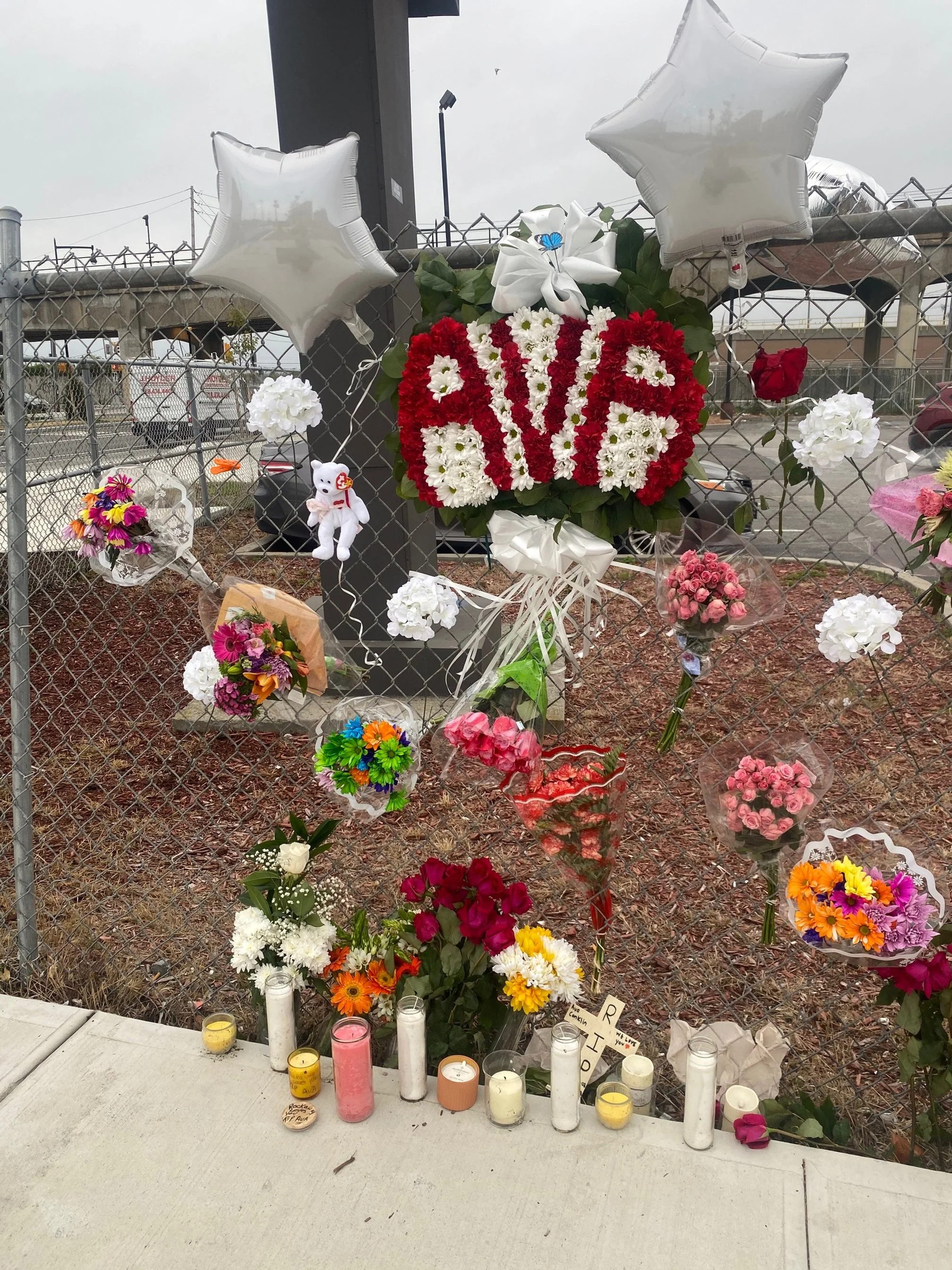Queens continues deadly pace for transportation fatalities
/The memorial for Ava Conklin, a 19-year-old girl who was killed waiting at a bus stop in Rockaway Beach in June. Eagle file photo by Ryan Schwach
By Ryan Schwach
Traffic deaths continue to reach record numbers in Queens, transportation advocacy group Transportation Alternatives found in a recent report.
On May 1, the transportation advocacy group released a traffic collision report that said 18 people had died from traffic violence in Queens up to that point in 2023. Now, not even three months later, that number has jumped to 40, a 122 percent increase, according to another report issued by the group on July 20.
That number is 43 percent higher than the same time last year and up 29 percent from the Vision Zero-era average, Transportation Alternatives says.
Queens had more deaths on streets with speed limits over 25 miles per hour and more fatalities resulting from curb jumps than the other boroughs combined.
Also, all five child traffic fatalities in New York City so far this year occured in Queens, including 7-year-old Dolma Naadhun, who was killed earlier this year in Astoria.
In June, 19-year-old Ava Conklin was killed in the Rockaways after a driver allegedly dozed off at the wheel and crashed into the MTA bus stop where Conklin was seated while waiting for her sister.
Queens City Council District 31, which includes sections of Southeast Queens and is represented by Transportation Committee Chair Selvena Brooks-Powers, has maintained its lead as the deadliest district in the city with nine deaths – up from six as of May 1.
After the May report was issued, a spokesperson for Brooks-Powers said the lawmaker, who also chairs the council’s transportation committee, was in “lock step agreement with Transportation Alternatives,” and added that the residents of Southeast Queens are “desperately underfunded for infrastructure.”
Citywide, 112 people were killed from traffic violence so far this year, with 61 of those deaths coming after that May 1 report was issued. That number is 6.7 percent higher than the Vision Zero-era average for the same period, according to the report.
It has also been a particularly deadly year for city cyclists, with 18 deaths through the first half of the year. Cyclist deaths have doubled since the last report was issued.
“Traffic violence is preventable. Every life lost is a wholly avoidable tragedy,” said Danny Harris, the executive director of Transportation Alternatives. “This data shows how much more work must be done to protect New Yorkers across our city, and the urgent need to put people first on our streets. Vision Zero works when our city’s leaders commit to and invest in street safety in every neighborhood. Every project that gets delayed, watered down, or canceled puts New Yorkers at risk.”
In order to slow the rate of fatalities, Transportation Alternatives suggests the city follow-through with a number safety projects, and that the state pass a weight-based vehicle registration fee that the group claims will encourage New Yorkers to buy smaller and less deadly cars.
They also say that Mayor Eric Adams and his administration should comply with The Streets Plan, which is a legal requirement to design and build safer streets.
“Mayor Adams and [Department of Transportation] Commissioner [Ydanis] Rodriguez must demonstrate the political will to put people above politics and redesign streets for safety now,” Harris said.




